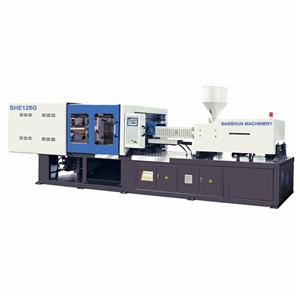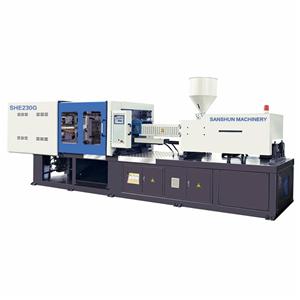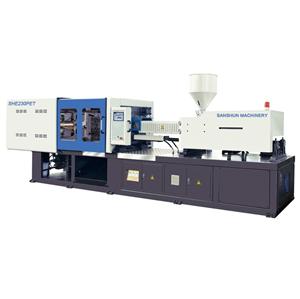- Home
- >
- News & Resources
- >
- Our Blog
- >
- Treatment of surface defects of injection molded products
Defects visible on the surface of injection-molded products include dark spots, gloss differences or fogging areas, and surface wrinkles or called orange peel. Usually, these defects occur near the gate or behind sharp corners away from the gate area.
Starting from the mold and molding process, we can find out the causes of these defects.
Dark spots on products
Dark spots appear near the gate, like a dim sum. It is especially obvious when producing products with high viscosity and low fluidity, such as PC, PMMA, or ABS. When the cooled surface layer resin is taken away by the center flowing resin, such visible defects may appear on the surface of the product.
It is generally believed that such defects occur frequently during the filling and holding phase. In fact, dark spots appear near the gate, usually at the beginning of the injection cycle. Tests have shown that the occurrence of surface slippage is actually due to the injection velocity, more precisely the flow velocity at the front end of the melt flow.
The dark spots around the gate and the dark spots that appear after the sharp corners are formed are caused by the initial injection speed being too high and the cooled surface being displaced by the internal fluid. Increasing the injection speed gradually and injection step by step can overcome this defect.
Even if the injection speed is constant when the melt enters the mold, its flow rate will change. When entering the mold gate area, the melt flow rate is very high, but after entering the mold cavity, which is the filling stage, the melt flow rate begins to decrease. This change in the velocity of the front end of the melt flow can cause defects on the surface of the product.
Reducing the injection speed is one way to solve this problem. In order to reduce the speed of the melt flow front at the gate, the injection can be divided into several steps, and the injection speed is gradually increased. The purpose is to obtain a uniform melt flow rate throughout the filling stage.
Low melt temperature is another cause of dark spots. Increasing the barrel temperature and increasing the screw back pressure can reduce the probability of this phenomenon. In addition, the mold temperature is too low will also produce surface defects, so raising the mold temperature is another feasible way to overcome the surface defects of the product.
Mold design defects can also produce dark spots near the gate. The sharp corners at the gate can be avoided by changing the radius. Pay attention to the gate location and diameter when designing to see if the gate design is appropriate.
Dark spots not only occur at the gate location, but also often occur after sharp corners of the product are formed. For example, the sharp corner surface of an article is generally very smooth, but behind it is very dull and rough. This is also caused by the excessively high flow rate and injection speed causing the cooling surface layer to be replaced by internal fluid and sliding.
Once again, it is recommended to use the stepwise injection and gradually increase the injection speed. The best way is to allow the melt to begin to increase in velocity only after flowing through the edges of the acute angle.
In the area away from the gate, sharp changes in the angle of the product will also cause this defect. Therefore, when designing products, smoother rounded corner transitions should be used in those areas.
Improve gloss difference
For injection molded products, the difference in gloss on the surface of the textured product is most obvious. Even if the surface of the mold is very uniform, the irregular gloss may appear on the product. That is to say, the mold surface effect of some parts of the product is not well reproduced.
As the distance of the melt from the gate gradually increases, the injection pressure of the melt gradually decreases. If the distal end of the gate of the product cannot be filled, the pressure there is the lowest, so that the texture of the mold surface cannot be correctly copied to the surface of the product. Therefore, the area with the highest cavity pressure (half of the fluid path from the gate) is the area where the gloss difference occurs the least.
To change this situation, you can increase the melt and mold temperature or increase the pressure, while increasing the holding time can also reduce the occurrence of gloss differences.
Good product design can also reduce the chance of gloss differences. For example, dramatic changes in the wall thickness of the product can cause irregular flow of the melt, making it difficult to replicate the surface texture of the mold to the surface of the product. Therefore, designing a uniform wall thickness can reduce the occurrence of such a situation, and an excessively large wall thickness or excessively large rib will increase the chance of gloss difference. In addition, the insufficient exhaust of the melt is also a cause of this defect.
The origin of orange peel
"Orange peel" or surface wrinkle defects generally occur at the end of the runner when forming thick-walled products with high-viscosity materials. During the injection process, if the melt flow rate is too low, the surface of the product will quickly solidify. As the flow resistance increases, the front flow of the melt will become uneven, so that the first solidified outer layer material cannot fully contact the cavity wall, thereby causing wrinkles.
These folds will become indelible defects after curing and holding pressure. For this defect, the solution is to increase the melt temperature and increase the injection speed.







